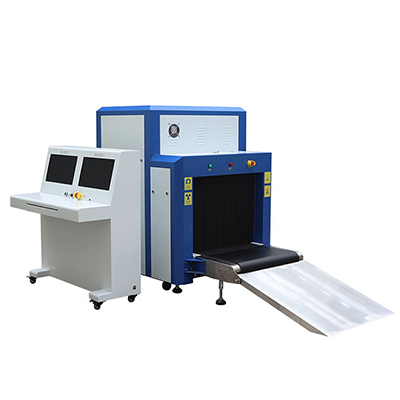©Copyright 2002-2025 JKDC Security Co., Limited. All rights reserved. Privacy Policy | Terms and Conditions Site Map
Provide One-stop Security Solution for a Safer World
The avoidance of harmful goods on aircrafts as well as its safe landing is the sole aim of security screenings at the airport. Hence, a metal detector is placed for passengers to walk through before they pass through into the gate of the facility. So also, an X-ray machine scans both checked-in baggage and hand baggage. This is why baggage scanner manufacturers produce quality produce that meets the purpose of it creation.
Well, one truth remains that until X-ray scanner is sourced from a renowned baggage scanner manufacturer, the efficiency of such equipment can be guaranteed. And this serves as the reason why it is very important to source for x-ray baggage scanners from a professional baggage scanner manufacturer.
Without much ado, let’s quickly run through the basics about X-ray baggage scanners.
Scanning technology of X-ray baggage scanner relies on X-rays
Passengers see an X-ray scanner as a tunnel having some form of a conveyor system that allows the baggage to move from one side of the tunnel to the other. With the use of X-ray the baggage is subjected to scanning within the box; the penetration of X-ray at different extent in various substance makes scanning possible.
A unique tube in the machine covered in lead yields X-ray. Contained within the lead covering is narrow that has a gap of about 1cm wide by whereby the X-ray enters inside the tunnel.
Every baggage is transported by the conveyor through the beam of the X-ray, while a detector across the tunnel measures the quantity of radiation that have penetrated the item when scanned. Materials like lead which are dense takes in the most amount of radiation thereby, preventing the progress of the X-ray.
As a result of the quantity of radiation transmitted through the luggage, a near to real-time image, which is a representation of the object created by a computer.

Blue or Orange – various colours for various materials
Images produced by X-ray in old times where white and black. But in today's world the image created on the computer which is joined to the main scanner of various items are displayed in various colours.
Subtance which are organic like plastic, wood, textile and water are usually coloured orange, while inorganic substance like metal are displayed in blue colour. If there is an intersection of inorganic and organic materials in the object to be scanned, the screen displays a green colour.
For instance, the appearance of a tennis ball inside a metal tunnel is green. Other materials which can be displayed in green colour are bones, salt and glass, Halonen clarifies. The more thicker a layer of a material or the denser the material is, causes the appearance of the object on the screen of the computer will be darker.
Materials which are very dense preventing the passage of the radiation appears black.
3D images having advanced and new technology
The smoothness of scanning process and the sharpness of images have become possible with the development of technology. An image can be amended to have a better picture of the components of baggage scanned.
The fusion of X-rays and CT technology or computer tomography in these scanner, will instinctively discover explosives. In a CT scanner, the wellspring of radiation spins with a very high speed about the item being scanned, thereby, producing a three-day dimension image. The ability of a new machine is high as it can scan about 1800 bags/hour.
Purchase High-quality baggage scanner from us.
If you need baggage scanners that will give you maximum output as well as serve it purpose of manufacture, you can count on us. We are an experienced and reputable brand in the manufacturing of this product. Kindly contact us today to get your baggage scanner.